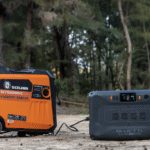The Early Days: Traditional Lighting
For centuries, lighting has been a crucial part of our daily lives. From candles to gas lamps, traditional lighting sources have been used to illuminate our homes, workplaces, and public spaces. While these traditional lighting methods have been effective, they have also been less than energy-efficient.
Candles and Oil Lamps
The earliest form of lighting, candles and oil lamps, have been in use for thousands of years. While they provided a warm and cozy glow, they were not very efficient and often had to be constantly tended to. Oil lamps, in particular, were a common source of lighting in many homes.
Gas Lighting and Edison’s Bulb
In the late 19th century, gas lighting became a popular alternative to traditional oil lamps. Gas lighting used a burning gas, such as methane or coal gas, to produce light. While more efficient than oil lamps, gas lighting was still not very efficient and required regular maintenance to function properly. It wasn’t until Thomas Edison invented the first practical incandescent light bulb in 1879 that the stage was set for a new era in lighting.
The Modern Era: Energy-Efficient Lighting
The development of energy-efficient lighting has come a long way in the past century. From compact fluorescent lamps (CFLs) to light-emitting diodes (LEDs), modern lighting technology has become increasingly sophisticated.
Compact Fluorescent Lamps (CFLs)
CFLs were introduced in the 1980s as a more energy-efficient alternative to traditional incandescent bulbs. They use a gas-filled tube that is excited by an electric current to produce light. CFLs use about 75% less energy than incandescent bulbs and can last up to 10,000 hours, compared to 1,000 hours for incandescent bulbs.
Light-Emitting Diodes (LEDs)
LEDs are the latest innovation in energy-efficient lighting. They use semiconductors to produce light and are even more energy-efficient than CFLs. LEDs use about 90% less energy than incandescent bulbs and can last up to 50,000 hours. They are also free of toxic chemicals and can be designed to withstand extreme temperatures and conditions.
The Future of Lighting: Smart Lighting
With the increasing demand for energy efficiency and sustainability, smart lighting is evolving as a cutting-edge technology. Smart lighting uses a combination of sensors, wireless connectivity, and data analytics to create a more personalized and energy-efficient lighting experience.
Smart Lighting Technologies
Smart lighting can be controlled and managed through apps, voice assistants, and other devices. It can also be set to adjust its intensity and color based on the time of day, occupancy, and other factors. This can result in significant energy savings and improved lighting quality.
Conclusion
In conclusion, the evolution of energy-efficient lighting has come a long way from traditional candles and oil lamps to today’s smart lighting technologies. From CFLs to LEDs, energy-efficient lighting has reduced our energy consumption and environmental impact. As we move forward, it is essential to continue innovating and improving lighting technology to meet the growing demands for energy efficiency and sustainability.
FAQs
- What are the benefits of energy-efficient lighting? Energy-efficient lighting can help reduce energy consumption, lower energy costs, and extend the lifespan of lighting fixtures.
- What is the difference between CFLs and LEDs? CFLs use a gas-filled tube to produce light, while LEDs use semiconductors to produce light. LEDs are generally more energy-efficient and last longer than CFLs.
- How do smart lighting systems work? Smart lighting systems use sensors, wireless connectivity, and data analytics to adjust lighting levels and color based on various factors, such as time of day, occupancy, and ambient light.
- What are the potential drawbacks of smart lighting systems? Smart lighting systems require more complex installation and maintenance, and may be more expensive than traditional lighting systems.
- What are some common applications for energy-efficient lighting? Energy-efficient lighting is commonly used in residential, commercial, and industrial settings, and is particularly well-suited for areas with high foot traffic or long operating hours.
Note: This article is written in HTML format, with headings (H1, H2, H3) and a conclusion and FAQs section at the end. The content is a general overview of the evolution of energy-efficient lighting, from traditional to cutting-edge technologies.




_2.png?w=150&resize=150,150&ssl=1)


